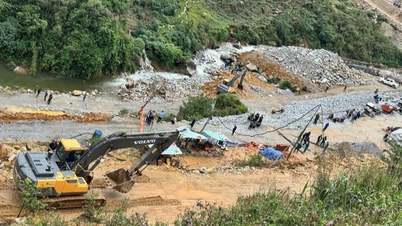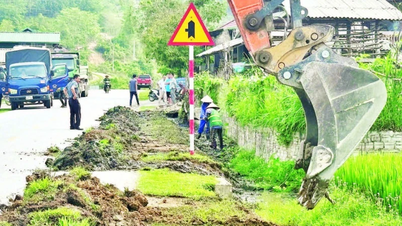Mr. Dang Phuc Nguyen - General Secretary of the Vietnam Fruit and Vegetable Association - shared with Lao Dong about the potential for coconut exports , especially when the two "giants" the US and China open their doors to this fruit. Vietnamese coconuts are full of opportunities to increase their position and soon join the billion-dollar export club.

Mr. Dang Phuc Nguyen. Photo: Character provided
Sir, recently, the Animal and Plant Health Inspection Service (APHIS) under the US Department of Agriculture has sent a letter to the Plant Protection Department ( Ministry of Agriculture and Rural Development - NNPTNT) informing about the US opening its market for Vietnamese coconuts (shelled and fibrous). In particular, the Chinese market has also opened its doors to Vietnamese coconuts. How do you assess the export potential of this fruit?
- Vietnam is one of the 10 largest coconut growing countries in the world. Currently, our country has about 200,000 hectares of agricultural land for coconut cultivation, with an output of about 2 million tons, mainly concentrated in the Central coastal provinces and the Mekong Delta. Of which, coconut is grown a lot in the provinces of Tra Vinh, Ben Tre...
In 2022 alone, despite a sharp drop in coconut prices, Vietnam's coconut export turnover still reached 900 million USD, making our country the fourth largest exporter of coconut products in the Asia- Pacific region .
Coconut trees are exported for many purposes, not only for their fruits, but also for other coconut products such as coconut oil for medical purposes, coconut wood, etc.
Therefore, the potential for exporting coconut products is still very large. If meeting technical requirements, Vietnam can export this fruit not only to the US and China markets, but also to other regions such as Europe and the UAE (United Arab Emirates).
China is no longer an easy market. The US market is very strict with plant quarantine subjects. So how can coconuts be sustainably exported to these demanding markets?
- According to the information we have, in February 2023, the US side sent the results of the pest risk analysis for fresh coconuts from Vietnam.
Through the analysis results, 43 species of pests on coconut trees were identified, but none of them were capable of traveling with fresh young coconuts exported from Vietnam to the US.
The US has also required Vietnam to process fresh young coconuts after harvest, such as removing rotten or fallen fruits, peeling off all green skin and at least 75% of the coconut fiber, to ensure safety standards.
Regarding the Chinese market, information from the Ministry of Agriculture and Rural Development said that the Chinese side has requested to conduct field inspections of growing areas and fresh coconut packaging facilities that need to export to this market to complete the assessment and analysis of pest risks for fresh coconuts and serve as a basis for signing the protocol.
During this inspection, the General Administration of Customs of China will focus on inspecting the pest control and prevention system on coconuts in growing areas and packing facilities; the registration process of growing gardens and export packing facilities.
Recently, due to the sharp drop in fresh coconut prices, many coconut growers have “neglected” their coconut plantations and not taken care of them, and some places have even cut down coconut trees. Now, with the opening of the world’s two largest markets, will there be enough raw materials for export, sir?
- It is true that due to the fall in coconut prices, growers have not taken care of their plantations as they should, and some farmers have even cut down coconut trees.
Therefore, if the demand for coconut imports from the US and China is large, there may be a shortage in the near future, because it takes 8 to 10 years for a coconut tree to be harvested. However, Vietnamese farmers are very sensitive, they can grasp market signals to have appropriate production plans.
Thank you!
laodong.vn


![[Photo] Prime Minister Pham Minh Chinh chairs meeting on science and technology development](https://vphoto.vietnam.vn/thumb/1200x675/vietnam/resource/IMAGE/2025/5/17/ae80dd74c384439789b12013c738a045)


![[Photo] Readers line up to visit the photo exhibition and receive a special publication commemorating the 135th birthday of President Ho Chi Minh at Nhan Dan Newspaper](https://vphoto.vietnam.vn/thumb/1200x675/vietnam/resource/IMAGE/2025/5/17/85b3197fc6bd43e6a9ee4db15101005b)
![[Photo] More than 17,000 candidates participate in the 2025 SPT Competency Assessment Test of Hanoi National University of Education](https://vphoto.vietnam.vn/thumb/1200x675/vietnam/resource/IMAGE/2025/5/17/e538d9a1636c407cbb211b314e6303fd)



















![[Photo] Nearly 3,000 students moved by stories about soldiers](https://vphoto.vietnam.vn/thumb/1200x675/vietnam/resource/IMAGE/2025/5/17/21da57c8241e42438b423eaa37215e0e)







































































Comment (0)